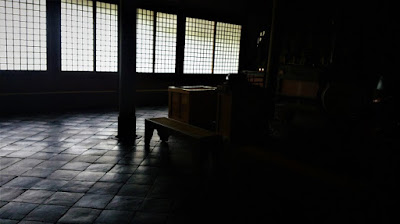MIHO Art Museum
The reason why we visited this museum was not the collections. It's because it was planned by the world famous architect, I. M. Pei, so we wanted to visit one of his works.
We didn't know whose art works were stored in this museum when we visited.
We know only the planner of this museum, and maybe this museum is his only work in Japan.
This art museum is located in the south of the Biwa lake, the region named 'Shigaraki'. So, this place is a little difficult to visit. Then, when you look at it from different angle, this location may be chosen to refuse fair-weather fans.
One more information, this museum opens almost half of a year, so, you can't visit it always. Please be careful, when you plan to visit this facility.
By the way, there is a mountain and a valley between the reception buildings which are located near the bus stop and used for the entrance facility and the main museum building where many art works waiting for visitors. So, if you aren't good at walking, you can't visit the main museum by yourself. Usually, people use automobiles from the reception building, but we visited by ourselves indeed!
Walking through a beautiful long tunnel and crossed a long silver bridge, we finally stood in front of the museum. The tunnel is near-futuristic and the bridge appearance remind us the world of science fictions. And the distance was not plane, but rich in variation. Furthermore, these features are surrounded by nature which overwhelmingly reject the human being's ordinary life, so it's precious.
 |
| From its postcard |
The collection is formed of Egyptian, West Asian, Chinese, Persian masterpieces. These works are from quite many regions but even though each of them are first-class collection and precious.
Moreover 'Sesshu (雪舟)', one of famous Japanese painters are exhibited specially. Many his works are there. Maybe top rank quality in Japan.
One of famous exhibitions
(Standing Bodhisattva)
Northern Wei-Eastern Wei dynasty, 6th century
Limestone with pigments Overall h. 120.5cm, Figure h. 97.2cm, Halo w. 52.0cm
Collected at the Longhuasi temple site in Chongde villeage,Bo)xing country
Shandong Museum, China










































